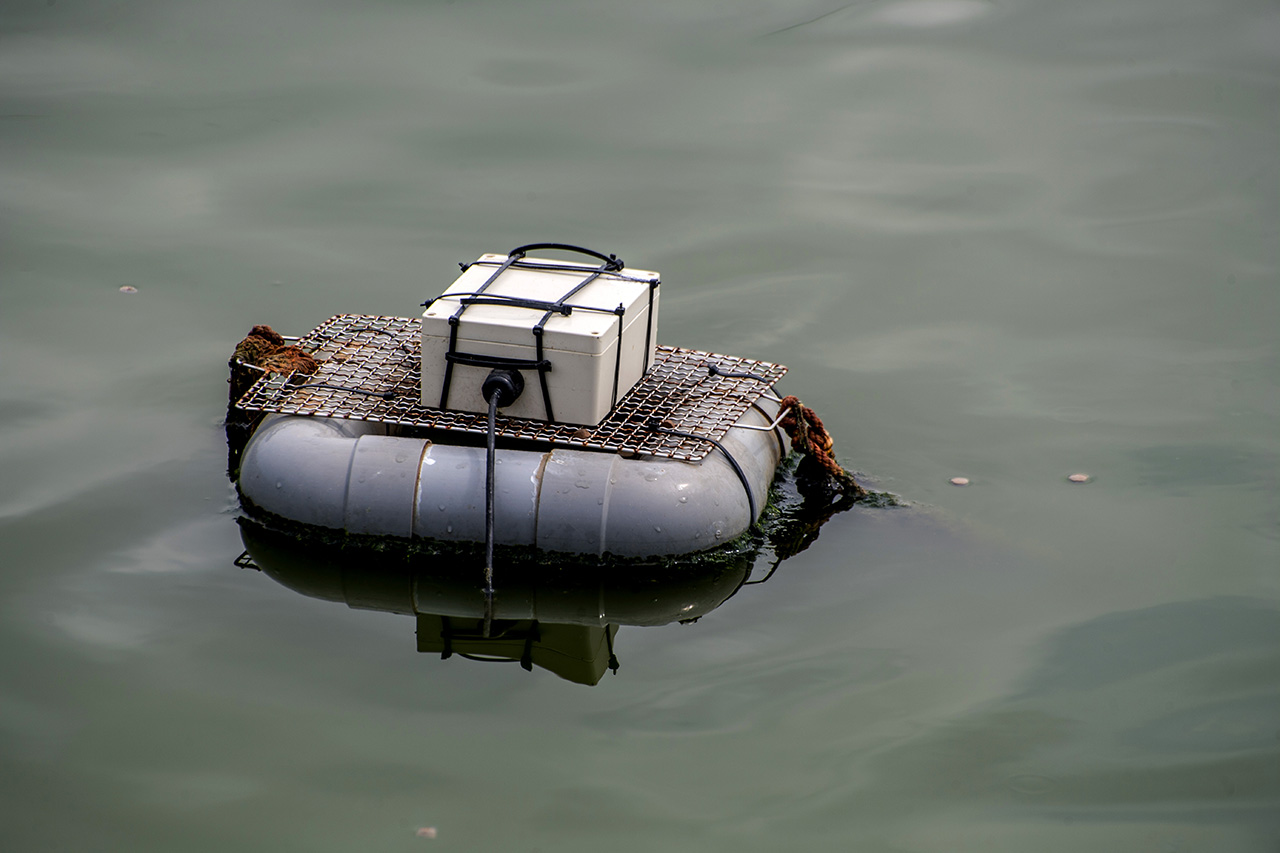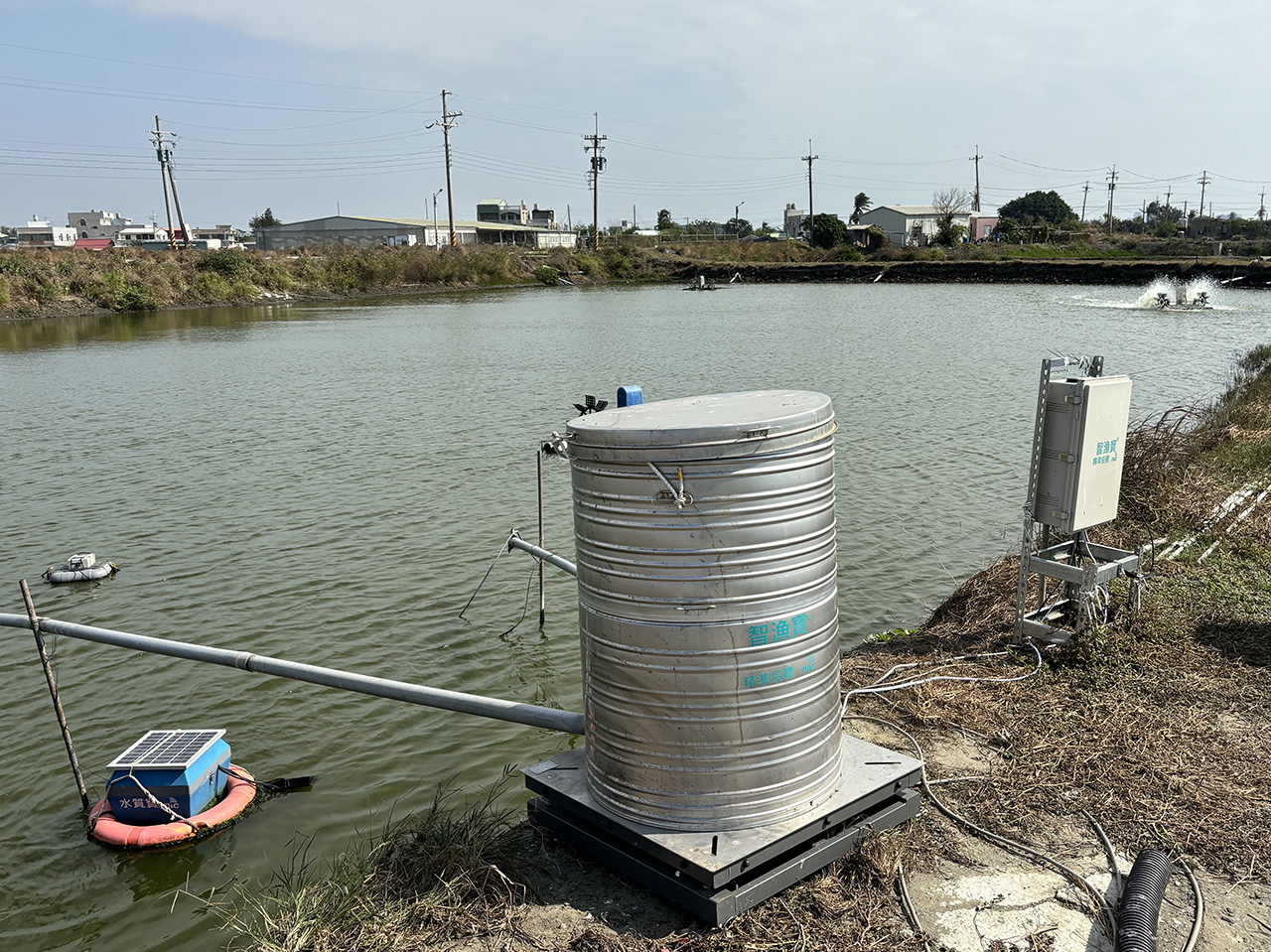R&D Focus
AI for Fish Farming

The AI-Powered Precision Feeding System integrates underwater acoustic sensors with visual recognition technology to monitor fish feeding activity.
Feeding is crucial to fish farming; however, labor shortages, time-consuming routines, and high operating costs pose ongoing challenges. To address these issues, ITRI has developed the AI-Powered Precision Feeding System, which automates feeding schedules, interprets fish behavior, and even learns from experienced fish farmers.
Feeding Isn’t Simple
While automatic feeders dispense fixed amounts of food at set times, they can’t adapt to the day-to-day changes in fish appetite caused by environmental variables such as weather, water temperature, and water quality. That’s why many farmers still rely on manual feeding—only by watching how quickly fish consume feed can they judge when and how much to feed next.
Yet feeding is time-intensive. In sea bass farming, fish are typically fed twice a day, with each feeding session lasting 2.5 to 3 hours—adding up to at least five hours a day. Feed also accounts for up to 50% of a fish farm’s expenses. Overfeeding leads to waste and water pollution, which can harm fish health, while underfeeding slows growth. As Chih-Jen Chen, Deputy Division Director of ITRI’s Smart Sensing & Systems Technology Center, puts it, “Feeding just the right amount is every farmer’s goal.”
A Smarter Way to Feed
Many smart feeders determine feeding times by monitoring water splashes as fish respond to feeding. However, these surface-level visual cues are easily affected by lighting, water clarity, and weather changes, and are ineffective for bottom feeders or those that eat at dawn or dusk.
ITRI’s system combines underwater vibration sensors with visual recognition technology to overcome these limitations. As feed enters the water, the sensors capture the vibrations and sounds generated when fish compete for food. AI then analyzes the data to decide whether to continue or pause feeding, ensuring precise and responsive control.
“This approach eliminates the impact of environmental interference and works with both surface- and bottom-feeding species, improving feeding accuracy. At the same time, the visual sensors allow farmers to monitor feeding remotely, enhancing safety and consistency in farm management,” said Chen.
Learning From the Experts
What sets this system apart is its ability to learn—not just from the fish, but from the people who care for them. It can be tailored to reflect each farmer’s feeding habits, translating hands-on expertise into algorithms. So far, AI models have been trained for key commercial species such as grouper and sea bass. The system’s cross-species adaptability enables it to mimic human feeding behaviors with remarkable accuracy, reducing feed usage by around 15% and cutting labor input by 30%-40%. This not only lowers operational costs but also streamlines farm management.

The system has been applied at several aquaculture facilities, including Taiwan’s largest sea bass feed supplier.
Field-Tested, Farmer-Approved
According to Chen, his team spent months conducting on-site research to observe and understand feeding behavior firsthand. They worked closely with farmers and aquaculture experts, continuously refining the algorithms to account for species-specific feeding patterns and preferences. This close collaboration helped turn real-world expertise into a reliable AI solution.
The system is now in active use at several aquaculture facilities and has been adopted by Taiwan’s largest sea bass feed supplier. ITRI has also developed complementary AI tools for real-time water quality monitoring and prediction. These tools can alert farmers to potential water changes, allowing them to take preventive action and reduce the risk of loss.
The AI-Powered Precision Feeding System marks a major step forward in the digital transformation of aquaculture. More than just automation, it adapts to both fish behavior and human expertise, making fish farming smarter and more resilient.